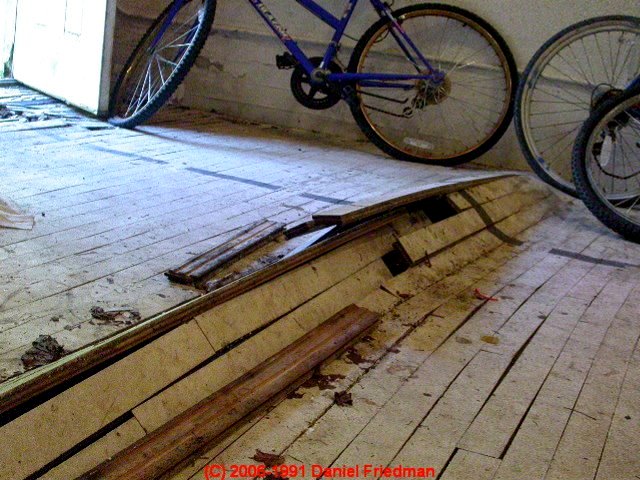A buckled floor can be a frustrating and unsightly issue that can compromise both the aesthetic appeal and structural integrity of your home. Fortunately, resolving this problem is within reach with the right tools and techniques. This comprehensive guide will equip you with the knowledge and steps necessary to tackle this challenge and restore your floor to its original pristine condition.

Image: wygizomyvyra.netii.net
Unraveling the Cause: Why Do Floors Buckle?
Buckling occurs when the flooring material expands beyond its intended dimensions due to excess moisture, temperature fluctuations, or structural issues. Here are the primary reasons behind this flooring woe:
- Moisture: Excessive humidity or exposure to leaks can cause wooden floors to absorb moisture, leading to swelling and buckling.
- Temperature Changes: Extreme heat or cold can induce significant expansion or contraction in flooring materials, particularly in wide-planked flooring.
- Subflooring Problems: Damage or deterioration of the subflooring can create an uneven surface, causing the flooring to buckle and warp.
- Improper Installation: Faulty installation techniques, such as inadequate nailing or spacing, can result in a weakened floor prone to buckling.
The Fix: A Step-by-Step Guide to Rectify a Buckled Floor
Depending on the severity of the damage and the underlying cause, the solution to a buckled floor can vary. Here’s a comprehensive approach to guide you through the repair process:
1. Assess the Damage and Identify the Cause
Examine the affected area thoroughly to determine the extent of the buckling and any potential structural problems. Inspect the subfloor for signs of water damage, rot, or sagging. Identifying the root cause will inform the appropriate repair strategy.

Image: enhancefloors.blogspot.com
2. Remove Buckling Planks
Carefully remove the buckled planks for further inspection and access to the subfloor. Note the condition of the planks and any underlying layers. Remove any damaged or softened subflooring.
3. Address Moisture Issues
If moisture is suspected to be the culprit, identify the source of the leak or excess humidity. Fix the source and allow the area to dry thoroughly before proceeding. For severe moisture damage, consider replacing the affected subflooring.
4. Check Subfloor Integrity
Inspect the subfloor for any damage or irregularities. Repair damaged areas by replacing the subflooring or reinforcing it with additional joists or supports. Ensure the subfloor is level and stable.
5. Install a Moisture Barrier
To prevent future moisture problems, install a moisture barrier beneath the new flooring. This barrier can be made of plastic sheeting or specialized underlayment materials designed to resist moisture intrusion.
6. Reinstall the Flooring
Reattach the repaired or new flooring planks to the subfloor using appropriate fasteners and spacing. Use a nailer or screws to secure the planks. Avoid overtightening fasteners, as this can cause further buckling.
7. Finish the Floor
Once the flooring is secured, finish the surface according to the type of flooring installed. This may involve sanding, staining, or applying a protective coating.
Preventing Future Buckling: Proactive Measures
To prevent a recurrence of the buckling issue, consider these proactive measures:
- Control Moisture Levels: Maintain proper humidity levels in your home by using dehumidifiers or air conditioners. Avoid placing heavy, moisture-generating items on the floor.
- Protect from Extreme Temperatures: Minimize exposure to excessive heat or cold by installing blinds or curtains to regulate temperature. Use rugs to protect floor surfaces from sunlight.
- Ensure Proper Installation: Hire a qualified contractor for flooring installation to ensure proper techniques and materials are used.
- Regular Maintenance: Inspect your floors regularly for any signs of damage or warping. Clean and maintain floors according to the manufacturer’s recommendations.
How To Fix A Buckled Floor
Embracing the Renewal: Conclusion
By following these steps and implementing preventive measures, you can effectively tackle a buckled floor and restore the beauty and integrity of your home flooring. Remember, the key to success lies in identifying the cause, addressing it appropriately, and taking proactive steps to prevent future occurrences. With a little effort and attention to detail, your floor will be as good as new, offering a solid foundation for many years to come.